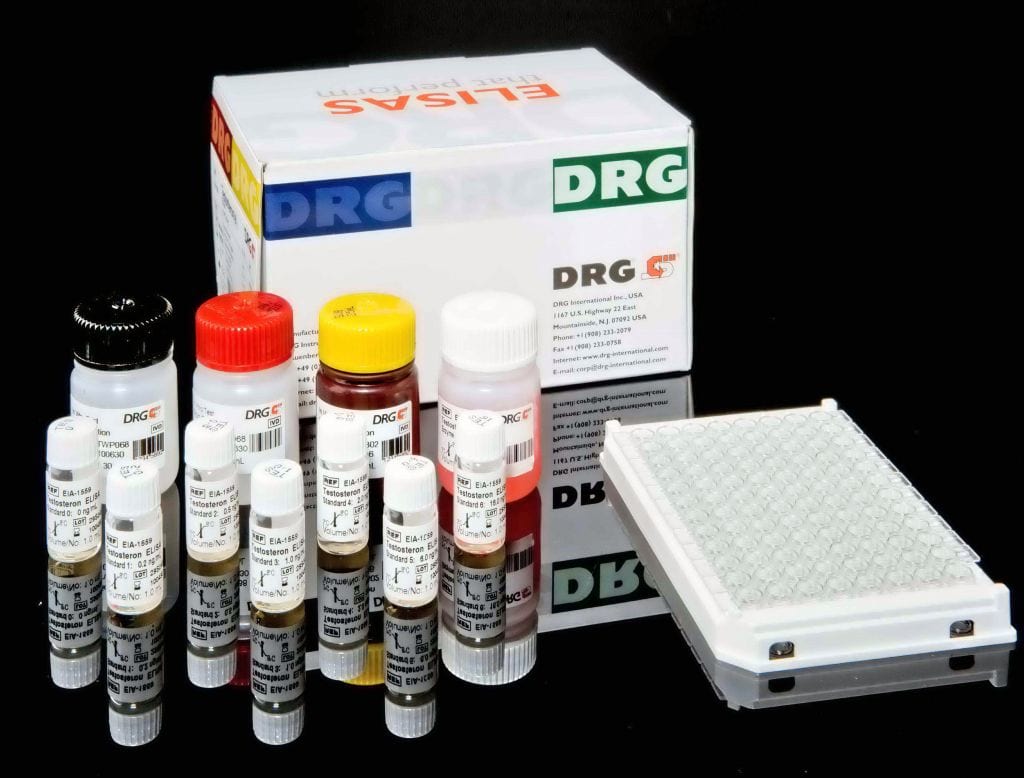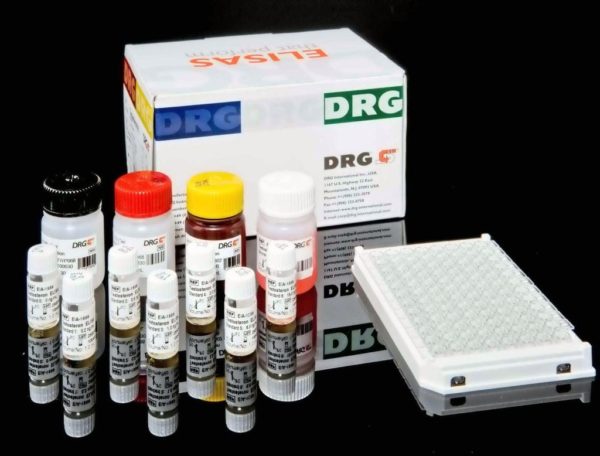Description
An enzyme immunoassay for the quantitative measurement of dehydroepiandrosterone (DHEA) in serum and plasma.
Dehydroepiandrosterone (DHEA; androstenolone; 3b-hydroxy-5-androsten-17-one) is a C19 steroid produced in the adrenal cortex and, to a lesser extent, gonads. DHEA serves as a precursor in testosterone and estrogen synthesis. DHEA has a rapid metabolic clearance rate as compared to its sulfated conjugate, DHEA-S. Because of this, serum DHEA levels are 100-1000 fold lower than DHEA-S levels. Serum DHEA levels are relatively high in the fetus and neonate, low during childhood, and increase again during puberty. Serum DHEA levels then progressively decline after the third decade of life. Serum DHEA levels increase in response to corticotropin and ACTH. No consistent changes in serum DHEA levels occur during the menstrual cycle or pregnancy. The physiological role of DHEA has not been conclusively defined. DHEA has relatively weak androgenic activity, which has been estimated at ~10% that of testosterone. However in neonates, peripubertal children and in adult women, circulating DHEA levels may be several-fold higher than testosterone
concentrations, and rapid peripheral tissue conversion to more potent androgens (androstenedione and testosterone) and estrogens may occur. Moreover, DHEA has relatively low affinity for sex-hormone binding globulin. These factors may enhance the biopotency of DHEA. A variety of in vitro effects, including anti-proliferative effects in different cell lines and effects on enzyme-mediated cell metabolism have been reported. In vivo studies suggest that DHEA may affect cholesterol and lipid metabolism, insulin sensitivity and secretion and immune function. Measurement of serum DHEA is a useful marker of adrenal androgen synthesis. Abnormally low levels may occur in hypoadrenalism, and elevated levels occur in several conditions, including virilizing adrenal adenoma and carcinoma, 21-hydroxylase and 3b-hydroxysteroid dehydrogenase deficiencies and in female hirsutism. Since very little DHEA is produced by the gonads, measurement of DHEA levels may aid in the localization of androgen source in virilizing conditions. Abnormal DHEA levels have been reported in schizophrenia and obesity. Therapeutic administration of DHEA has been proposed for several conditions, including obesity and cardiovascular disease.
The DRG DHEA ELISA is a solid phase enzyme-linked immunosorbent assay (ELISA), based on the principle of competitive binding. The microtiter wells are coated with a polyclonal (rabbit) antibody directed towards an antigenic site of the DHEA molecule.Endogenous DHEA of a patient sample competes with a DHEA-horseradish peroxidase conjugate for binding to the coated antibody. After incubation the unbound conjugate is washed off. The amount of bound peroxidase conjugate is inversely proportional to the concentration of DHEA in the sample. After addition of the substrate solution, the intensity of colour developed is inversely proportional to the concentration of DHEA in the
patient sample.




